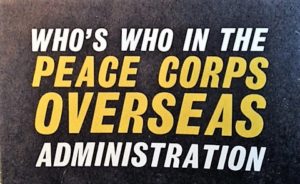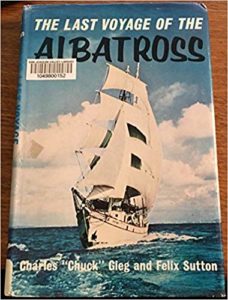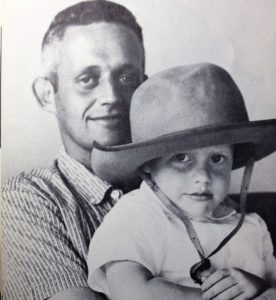Colombia’s First Peace Corps Staff (Part One)
 The first program to be developed for Latin America was planned for the immense, mountainous country-side of Colombia. Co-administration of this rural community development effort as assigned to CARE in the first private agency contract to be signed by the Peace Corps.
The first program to be developed for Latin America was planned for the immense, mountainous country-side of Colombia. Co-administration of this rural community development effort as assigned to CARE in the first private agency contract to be signed by the Peace Corps.
CARE offered extended experience in community development work in Colombia, and the agency once counted Derek Singer among its administrators there. When he set out to negotiate a Peace Corps program in Colombia, Singer turned naturally in the direction of his former employer. For both the Peace Corps and CARE, the first Colombia program was an exciting experiment, the first attempt at the kind of community action work which has come to occupy the full time of a fourth of all Volunteers overseas.
The 60 Volunteers, all men, who turned this experiment into a practical program, entered training at Rutgers University on June 25, 1961. Together with the Tanganyika-bound surveyors, who reported to Texas Western University on the same day, they were the first Volunteers to go into training anywhere. (Colombia One PCVs ‘claim’ that they are the first Volunteers as they arrived at Rutgers earlier in the day than the Tanganyika Volunteers arrived at Texas Western, a matter of two hours. Of course, at the time, all of them were simply Trainees.)
In August, Christopher Sheldon was named Peace Corps Director in Colombia. Sheldon made a preliminary visit to Colombia that same month. He opened the Peace Corps office in Bogota when he returned to stay on September 6, 1961, four days before the arrival of the Volunteers.
Christopher Barrows Sheldon was born in Lima, Peru. A graduate of Phillips Exeter Academy in 1945, he served a short hitch as an Air Force cadet and then went off to Colombia to learn Spanish. Next, he went to San Marcos University in Lima, Peru, where he received a B.A. in linguistics in 1951. There in Peru, he became interested in doing missionary work as a linguist–developing writing systems for Indian languages and then translating educational materials into those languages. He earned a bachelor of divinity degree from Princeton Theological Seminary but was never ordained. He next earned a doctorate in philosophy from the University of Madrid.
He sailed from the early age of 15 and was taken on by Irving Johnson, the explorer and captain of the vessel Yankee, as a crew member on around-the-world voyage from 1956 to 1958. After the first mate fell ill, Mr. Sheldon got that job.
It was on this voyage that Sheldon and three others, diving off Pitcairn Island in the South Pacific, discovered the anchor of the ship Bounty made famous by the mutiny against Captain Blight.
In May 1959, he married Alice N. Strahan, a doctor who had served as medical officer on the Yankee. Together they founded the Ocean Academy as a floating prep school in 1959. Sheldon held that the sea was ”a great molder of character.” Students paid $3,250 for an academic year of study, including Spanish and celestial navigation, taught by Sheldon.
Also in 1959, he purchased his own ship, the 92-foot twin-masted sailing ship brigantine “Albatross,” which he had fitted out in Lisbon, Portugal. With a crew of 23 young people, he sailed the Albatross through the Mediterranean and the Suez Canal, down the east coast of Africa, around the Cape of Good Hope with stops in Nigeria, Ghana and Liberia, and then across the Atlantic to the United States.
He picked up his third group of students on Sept. 20, 1960, in Bermuda. At the beginning of the trip, Mr. Sheldon had been worried about Hurricane Donna, but that turned out to be little more than a rainstorm. This school voyage was organized with 15 boys aboard and they went through the Panama Canal and on to two months in the Galapagos Islands. While returning home, they visited the San Blas Islands and the Mayan ruins in Yucatan. Tragedy then stuck in the form of a sudden storm, very likely an incipient tornado.
About 8:30 a.m. on May 2, 1961, the Albatross was gliding through a slight mist in calm seas 180 miles west of Key West on the way to Nassau. Suddenly, a single bolt of lightning flashed across the sky, and a blast of wind smacked the ship. There is no way to predict a squall, a short, sharp storm of wind. Sailors use the term ”white squall” because of the whitecaps that sometimes precede such a storm, which meteorologists call a microburst.
When the white squall hit the Albatross, the six people who were below deck could not escape. Four students, the ship’s cook and Mrs. Sheldon vanished. Sheldon, 11 students and an English and math teacher scrambled into lifeboats. They were rescued a day later by a passing Dutch freighter.
”It was as if a giant hand took hold of us,” Mr. Sheldon said in a 1996 interview with People magazine. ”In 15 seconds the Albatross was on its side. In 60 seconds it filled with water. And then it was gone — the ocean was calm.”
 The disaster inspired the 1996 movie ”White Squall.” Jeff Bridges portrays Mr. Sheldon in the movie about the sinking. The screenplay was based on a 1963 book about the incident, ”The Last Voyage of the Albatross,” written by Chuck Gieg, one of the students. Other survivors included William P. Bunting, son of Mary I. Bunting, the president of Radcliffe College.
The disaster inspired the 1996 movie ”White Squall.” Jeff Bridges portrays Mr. Sheldon in the movie about the sinking. The screenplay was based on a 1963 book about the incident, ”The Last Voyage of the Albatross,” written by Chuck Gieg, one of the students. Other survivors included William P. Bunting, son of Mary I. Bunting, the president of Radcliffe College.
After the accident in 1960, Mrs. Bunting told Sargent Shriver, about Christopher Sheldon, and he offered him a job. Sheldon knew he wanted to go on working with young people and he saw in the Peace Corps a chance to do so while serving at the same time “a program of tremendous value.”
In 1965, after his CD tour, Christopher Sheldon again developed sea fever and bought a 130-foot ship, the Verona, for use as a floating school. On his second voyage in the ship, the ship caught fire near the west coast of Central Africa. The fire destroyed the vessel, but all aboard escaped.
In 1967, Sheldon was again recruited by the Peace Corps and he took charge of its training center in Puerto Rico.
Research Document: Who’s Who in the Peace Corps Overseas Administration (1963)
The photographs are by Rowland Scherman, Paul Conklin and Jim Walls, first photographers for the agency.

Thank you for a return to my days as PCV.
Gracias for información on Chris Sheldon. His CARE co-director was Merton Cregger who was our PCV Face and leader upfront
Chris was more behind the scenes.
I was 21 when Chris and Mert appointed me Volunteer Leader for Nariño and Putumayo and provided me with 4-door Jeep that I had until departure almost on my birthday May 31, 1964.
I went to UCBERKELEY, determined to work with campesinos, rural communities and poor all over.
I met my goal.
AND, I managed to collect, maintain and use pictures and connections with my PCV friends all this time!
Refugio I. Rochin, PhD
Professor & Director Emeritus
UC Davis & UC Santa Cruz
Cell: 831-419-2411
Rrochin@ucdavis.edu
https://www.aeaweb.org/about-aea/committees/csmgep/profiles/refugio-rochin-rodriguez
http://peacecorpsworldwide.org/colombias-first-peace-corps-staff-part-one/